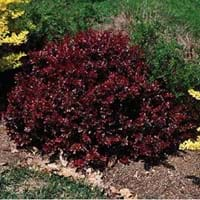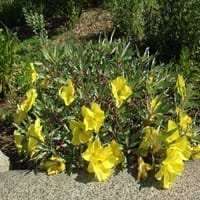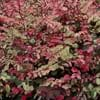Life Span
Perennial
Perennial
Type
Shrub
Herbaceous Perennial, Perennial
Origin
China
United States, Central United States, South-Central United States, Texas
Types
European Barberry, Japanese Barberry,
Not available
Habitat
Hillside, Woods
Bluffs, limestone outcrops, Prairies, Rocky areas
USDA Hardiness Zone
Not Available
5-8
Sunset Zone
Not Available
1a, 1b, 2a, 2b, 3a, 3b, 4, 5, 6, 7, 8, 9, 10, 11, 12, 13, 14, 15, 16, 17, 18, 19, 20, 21, 22, 23, 24
Habit
Oval or Rounded
Spreading
Flower Color
Yellow
Yellow, Lemon yellow, Gold
Flower Color Modifier
Not Available
Bicolor
Fruit Color
Red
Light Green, Tan
Leaf Color in Spring
Green, Dark Green
Green
Leaf Color in Summer
Dark Green
Green
Leaf Color in Fall
Dark Green
Green
Leaf Color in Winter
Dark Green
Light Green
Leaf Shape
Oval
Lance shaped
Plant Season
Spring, Summer, Fall, Winter
Spring, Summer
Sunlight
Full Sun, Partial Sun, Partial shade
Full Sun, Partial Sun
Type of Soil
Clay, Loam, Sand
Loam, Sand
The pH of Soil
Acidic, Neutral, Alkaline
Acidic, Neutral, Alkaline
Soil Drainage
Well drained
Well drained
Bloom Time
Spring, Late Spring
Late Spring, Early Summer, Summer, Late Summer
Tolerances
Drought
Drought
Where to Plant?
Ground
Ground, Pot
How to Plant?
Seedlings, Transplanting
Divison, Seedlings
Plant Maintenance
Medium
Medium
Watering Requirements
Requires regular watering
Average Water Needs, Do Not over Water, Requires regular watering
In Summer
Lots of watering
Lots of watering
In Spring
Moderate
Moderate
In Winter
Average Water
Average Water
Soil pH
Acidic, Neutral, Alkaline
Acidic, Neutral, Alkaline
Soil Type
Clay, Loam, Sand
Loam, Sand
Soil Drainage Capacity
Well drained
Well drained
Sun Exposure
Full Sun, Partial Sun, Partial shade
Full Sun, Partial Sun
Pruning
Remove dead leaves, Remove deadheads
Remove damaged leaves, Remove dead branches, Remove dead leaves
Fertilizers
All-Purpose Liquid Fertilizer
All-Purpose Liquid Fertilizer
Pests and Diseases
Verticillium Wilt
Leaf spot, Root rot
Plant Tolerance
Drought
Drought
Flower Petal Number
Single
Single
Foliage Texture
Medium
Medium
Foliage Sheen
Glossy
Matte
Attracts
Not Available
Bugs, Butterflies, Flies, Flying insects, Insects
Allergy
Itchiness, Stomach burn
Not Available
Aesthetic Uses
Beautification
Beautification, Decorating walls, Hanging Basket, Showy Purposes, Used as an interior landscaping species, Used for decorating walls, fences, gates, hedges, etc.
Beauty Benefits
Not Available
Glowing Skin, Improve skin condition, Making cosmetics, used as a dye
Environmental Uses
Air purification
Air purification
Medicinal Uses
Diarrhea, High blood pressure, Menstrual Disorders, Upset stomach, Urinary tract problems
Arthritis, cholesterol-lowering, Diarrhea, Eczema, Inflammation, lowering blood pressure
Part of Plant Used
Fruits
Whole plant
Other Uses
Used As Food, Used as Ornamental plant, Used for fragrance
Making Perfumes, Used as Ornamental plant, Used for bedding in gardens
Used As Indoor Plant
No
Yes
Used As Outdoor Plant
Yes
Yes
Garden Design
Hedges, Screening, Wind Break
Mixed Border, Rock Garden, Wall, Wildflower
Botanical Name
BERBERIS soulieana
OENOTHERA macrocarpa
Common Name
Barberry
Bigfruit evening Primrose,Ozark sundrop,Missouri evening primrose
In Hindi
Burberry
Missouri primrose
In German
Burberry
Missouri Primel
In French
Burberry
Oenothera macrocarpa
In Spanish
Burberry
prímula Missouri
In Greek
Burberry
Missouri primrose
In Portuguese
Burberry
Missouri Primrose
In Polish
kwaśnica
Wiesiołek ozdobny
In Latin
Barberry
Primrose Missouri
Phylum
Magnoliophyta
Tracheophyta
Class
Magnoliopsida
Magnoliopsida
Order
Ranunculales
Myrtales
Family
Berberidaceae
Onagraceae
Clade
Angiosperms, Eudicots
Angiosperms, Eudicots, Rosids
Tribe
Not Available
Onagreae
Subfamily
Not Available
Onagroideae
Number of Species
Not Available
Season and Care of Barberry and Missouri Primrose
Season and care of Barberry and Missouri Primrose is important to know. While considering everything about Barberry and Missouri Primrose Care, growing season is an essential factor. Barberry season is Spring, Summer, Fall and Winter and Missouri Primrose season is Spring, Summer, Fall and Winter. The type of soil for Barberry is Clay, Loam, Sand and for Missouri Primrose is Loam, Sand while the PH of soil for Barberry is Acidic, Neutral, Alkaline and for Missouri Primrose is Acidic, Neutral, Alkaline.
Barberry and Missouri Primrose Physical Information
Barberry and Missouri Primrose physical information is very important for comparison. Barberry height is 120.00 cm and width 120.00 cm whereas Missouri Primrose height is 15.20 cm and width 35.60 cm. The color specification of Barberry and Missouri Primrose are as follows:
Barberry flower color: Yellow
Barberry leaf color: Green and Dark Green
Missouri Primrose flower color: Yellow, Lemon yellow and Gold
- Missouri Primrose leaf color: Green
Care of Barberry and Missouri Primrose
Care of Barberry and Missouri Primrose include pruning, fertilizers, watering etc. Barberry pruning is done Remove dead leaves and Remove deadheads and Missouri Primrose pruning is done Remove damaged leaves, Remove dead branches and Remove dead leaves. In summer Barberry needs Lots of watering and in winter, it needs Average Water. Whereas, in summer Missouri Primrose needs Lots of watering and in winter, it needs Average Water.





